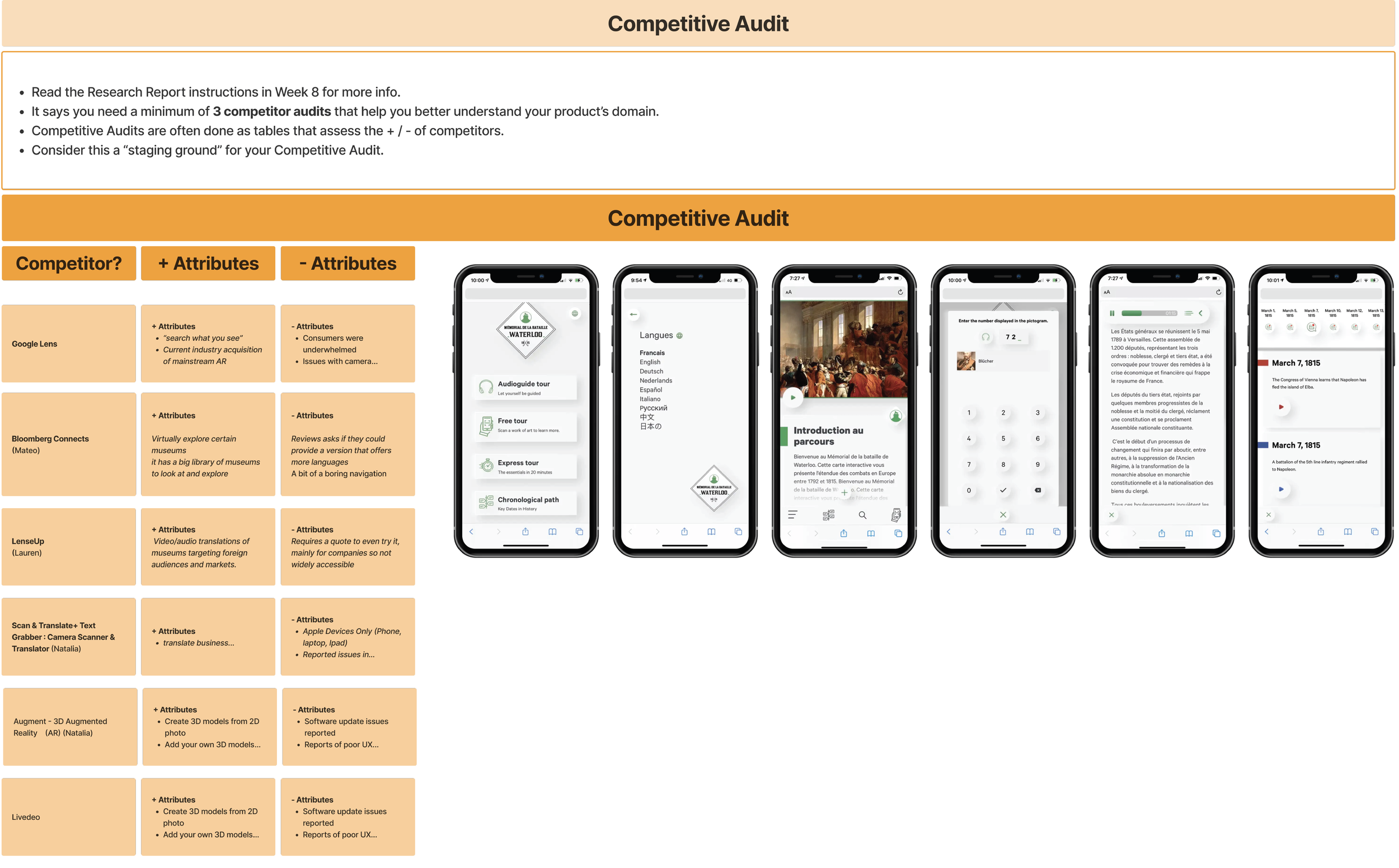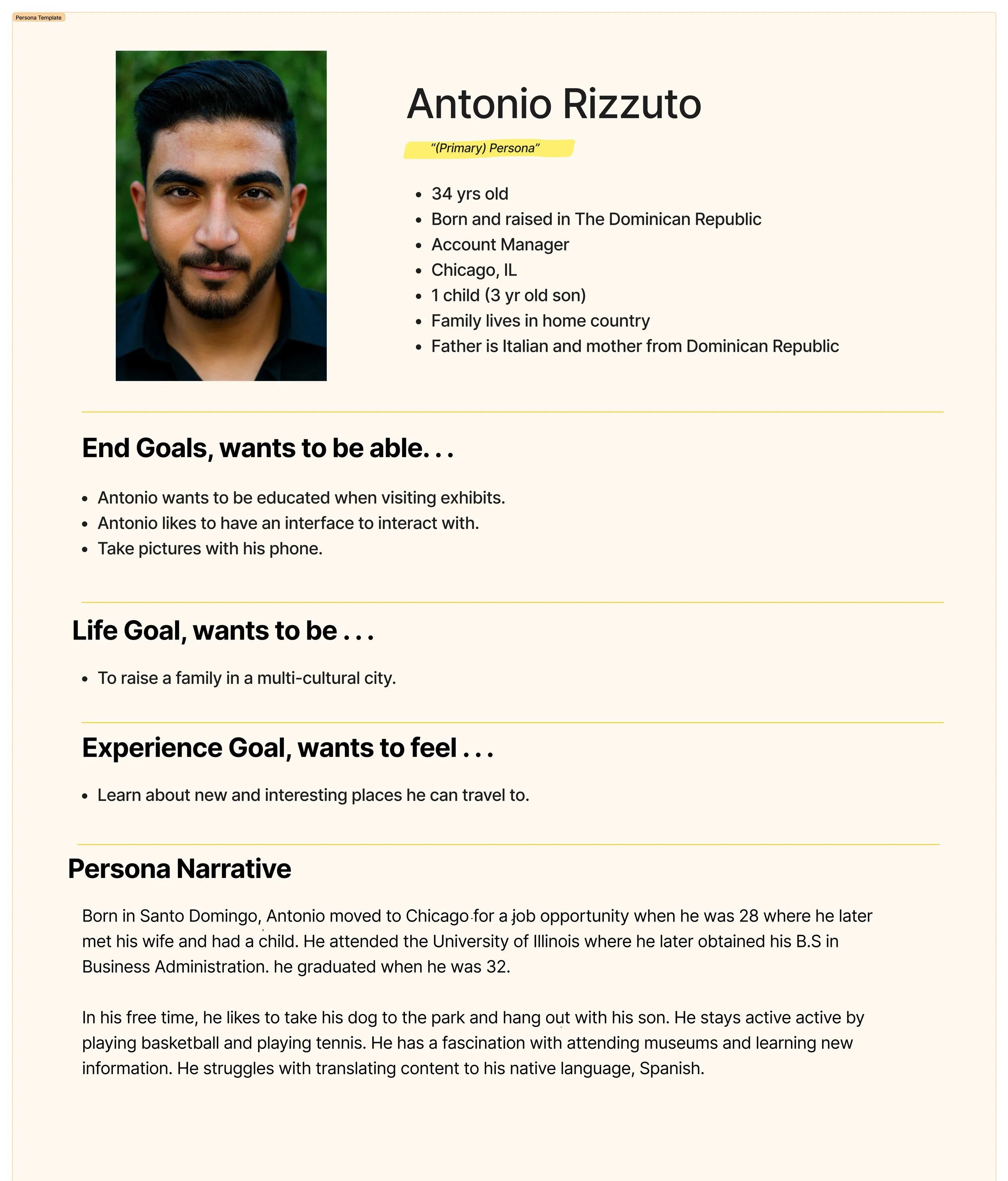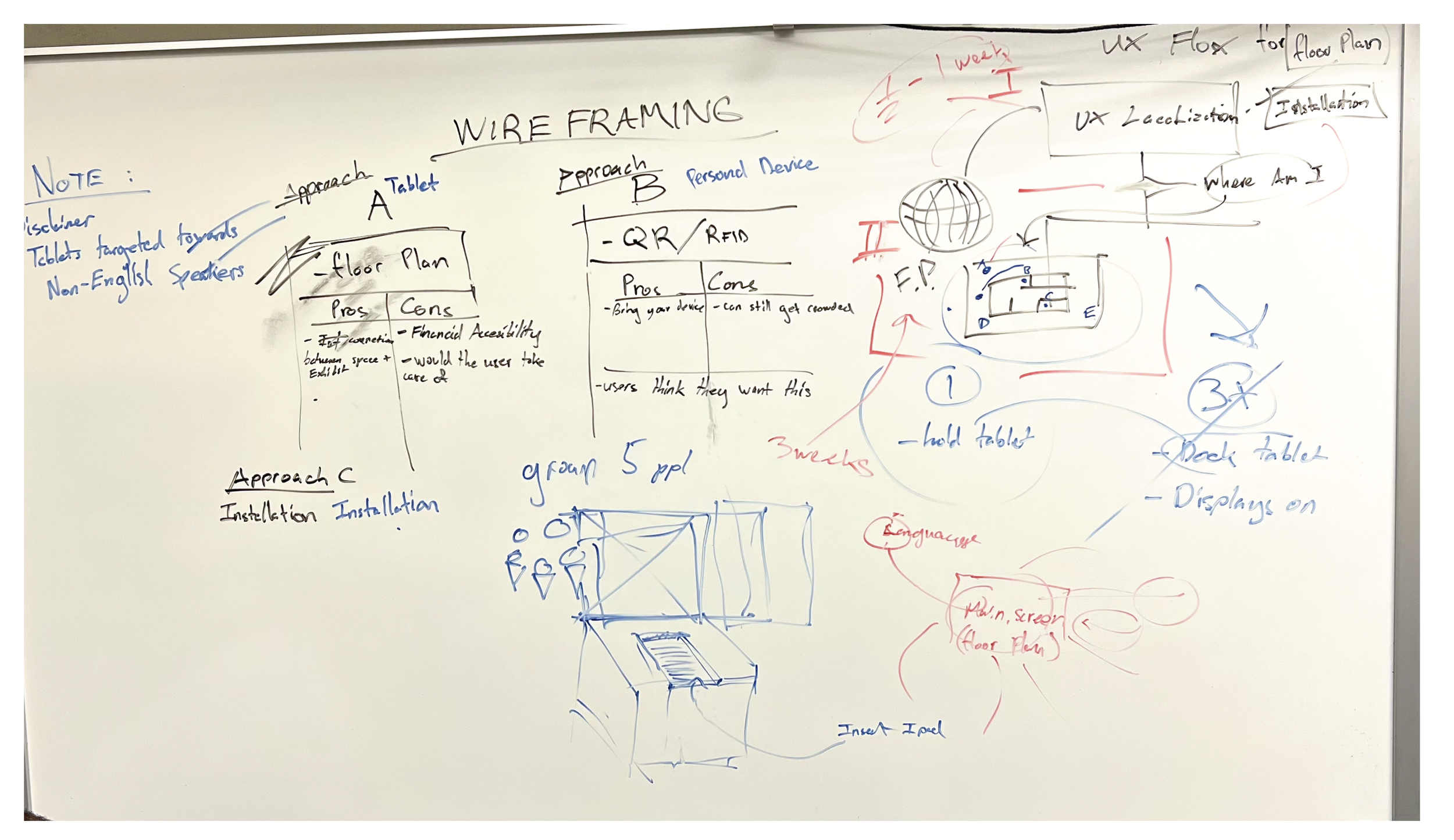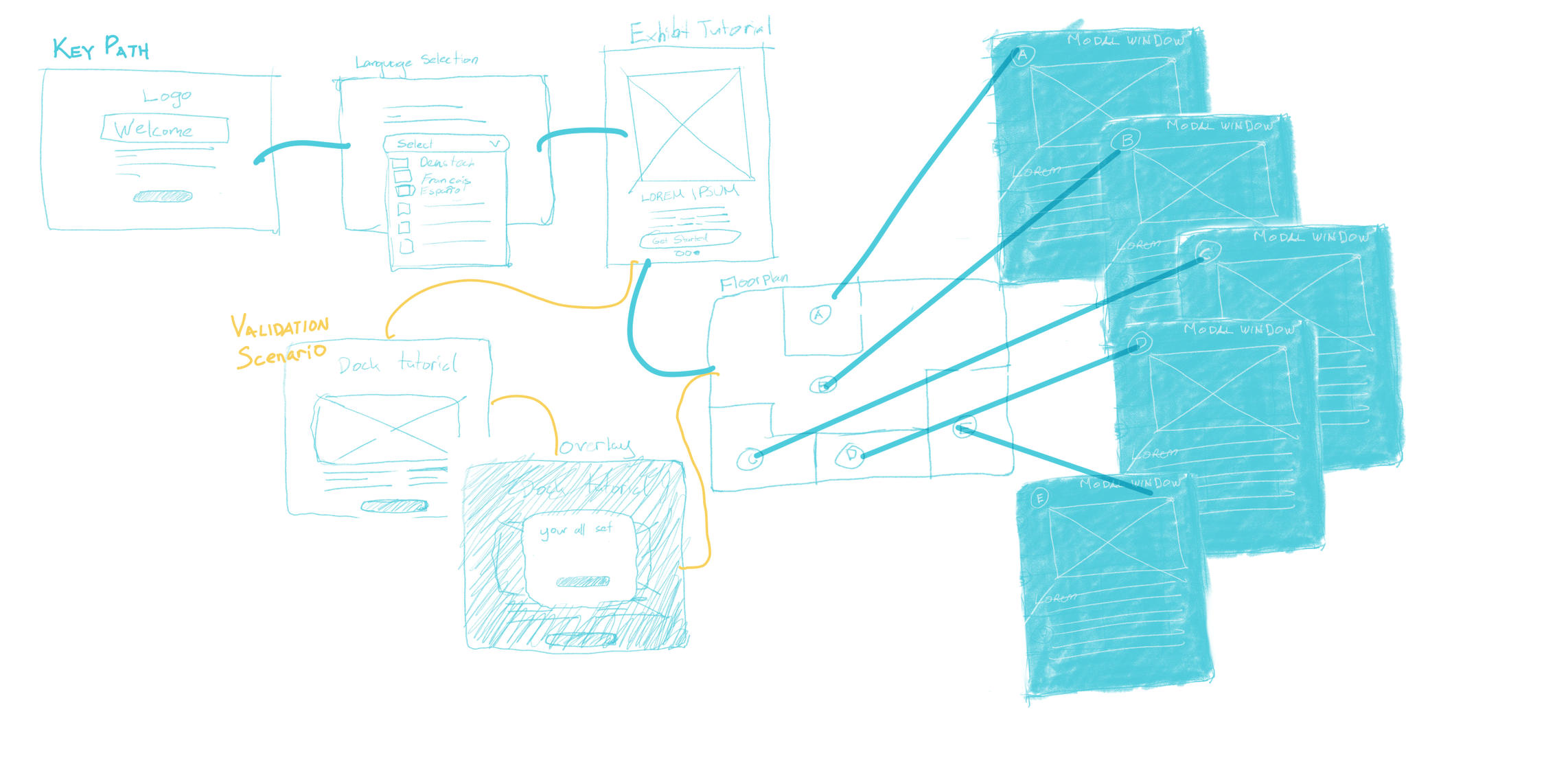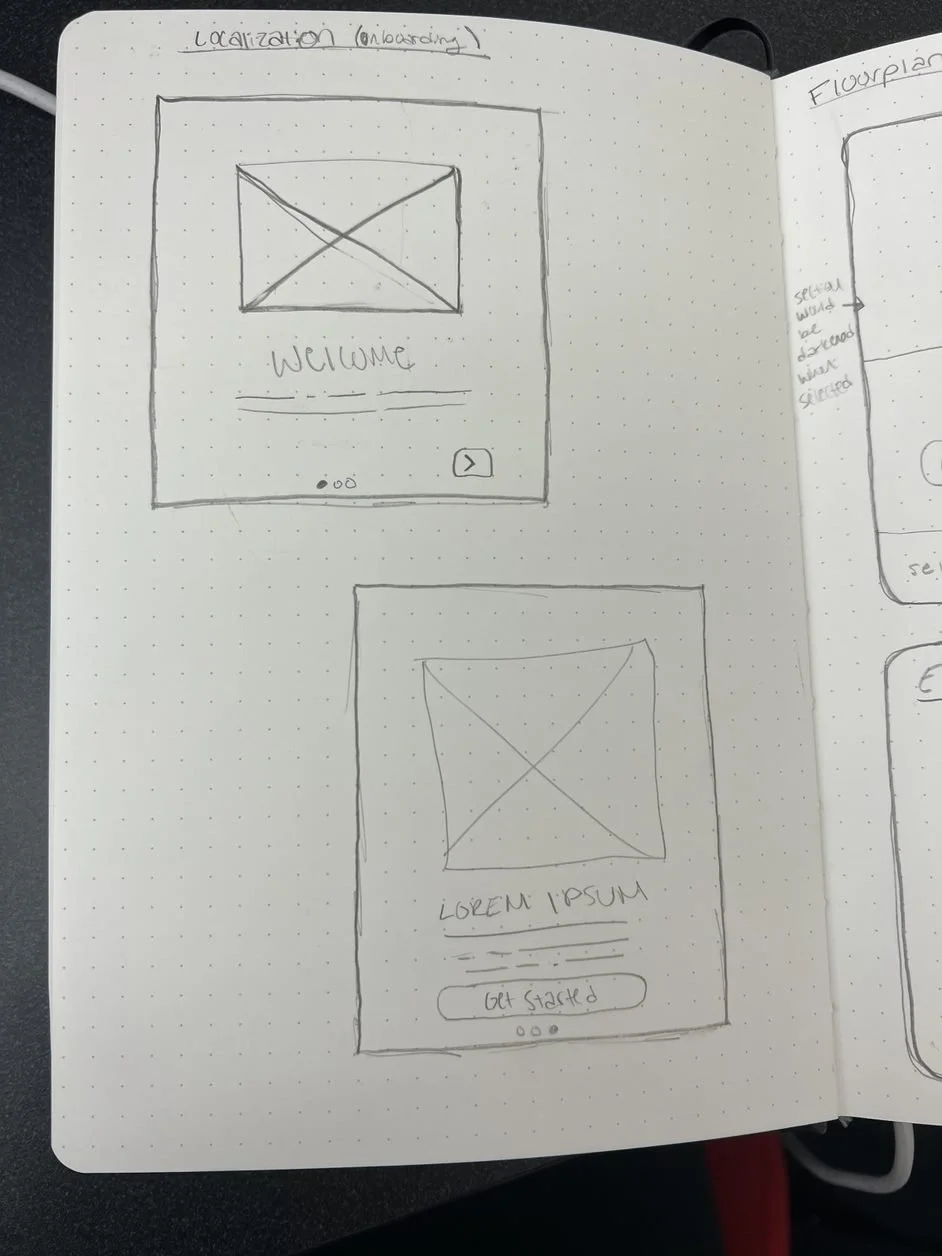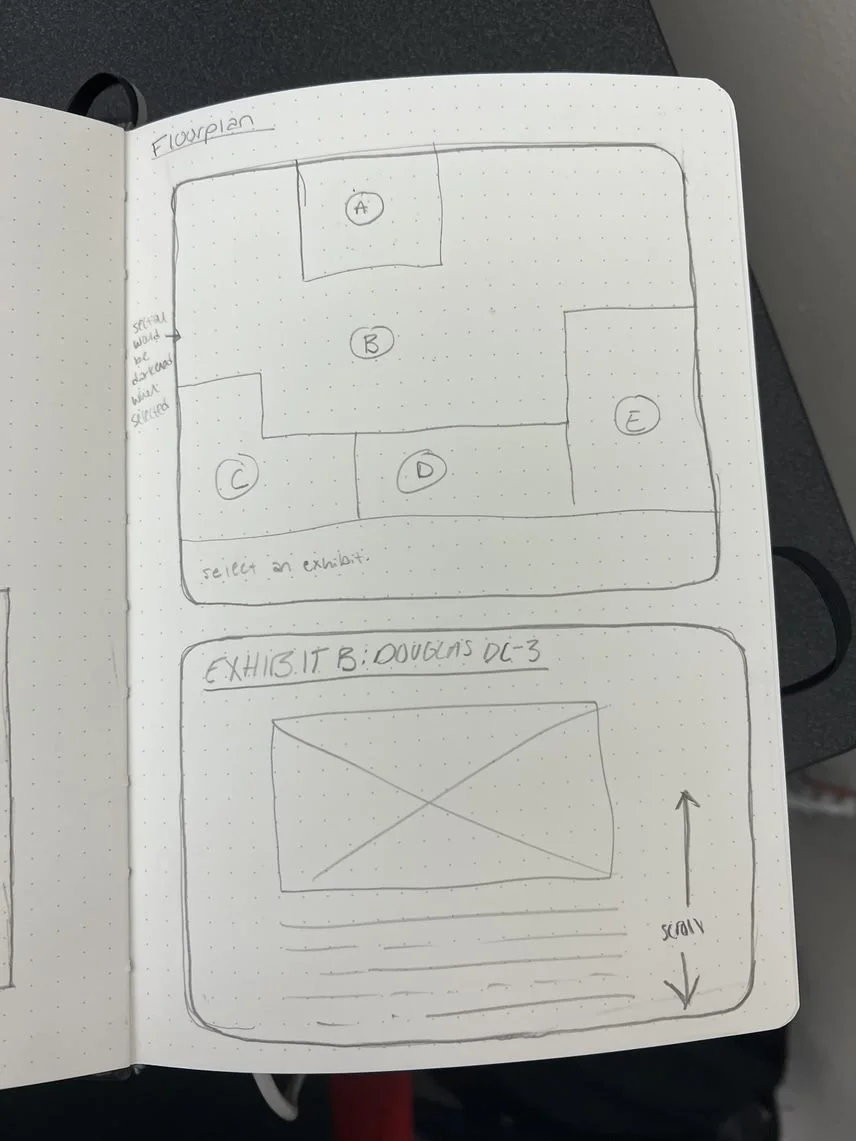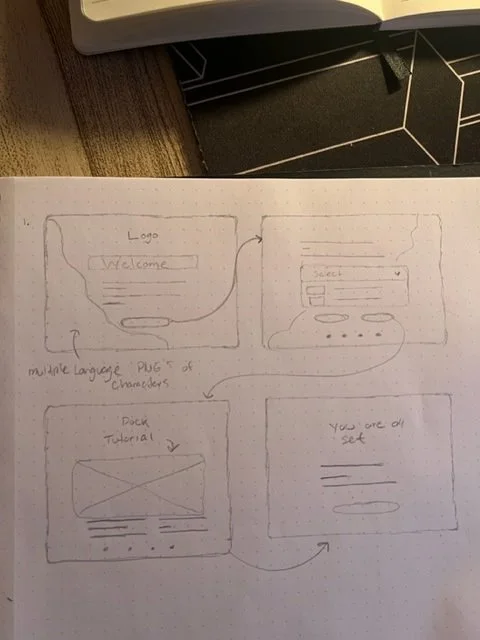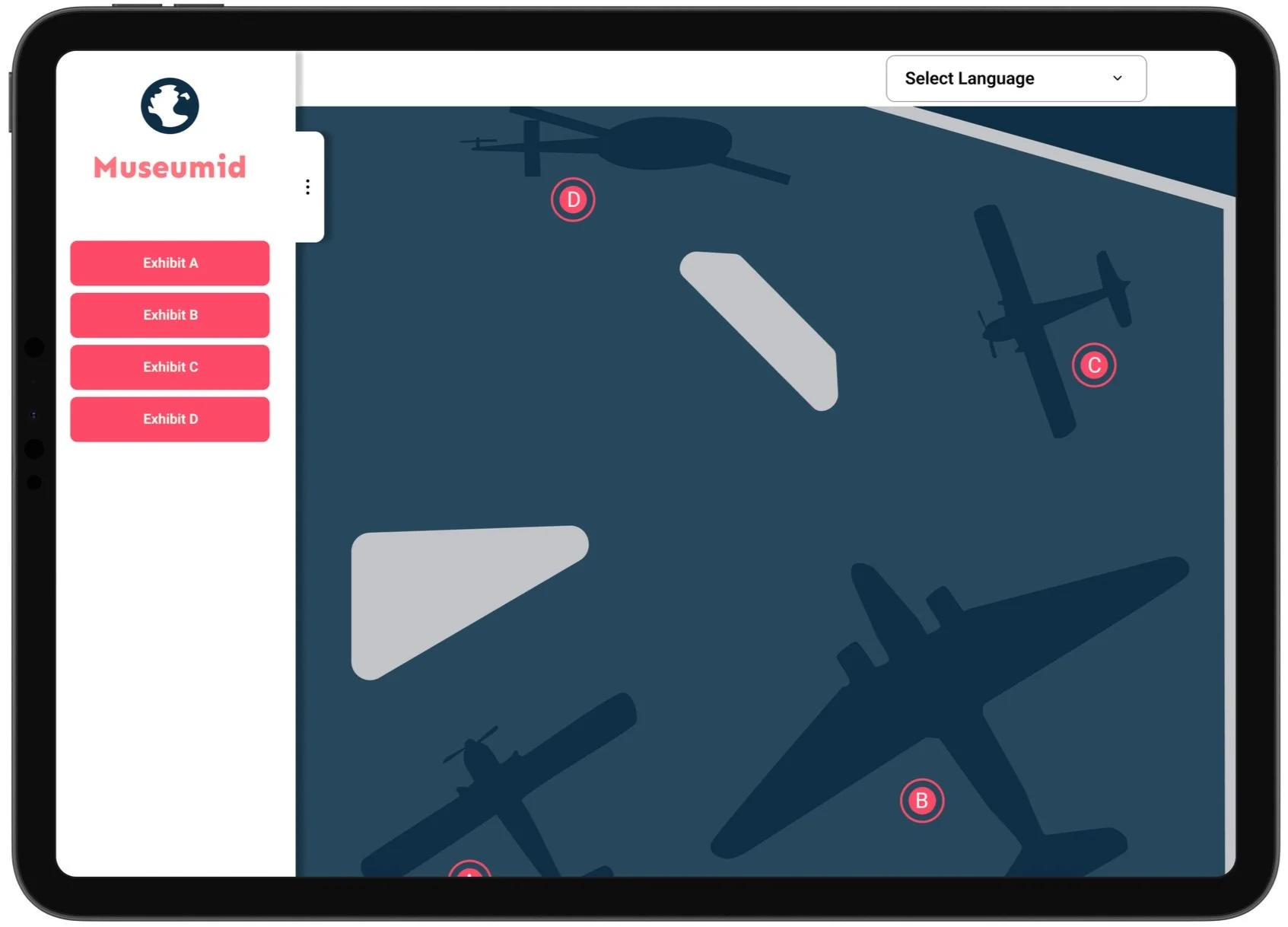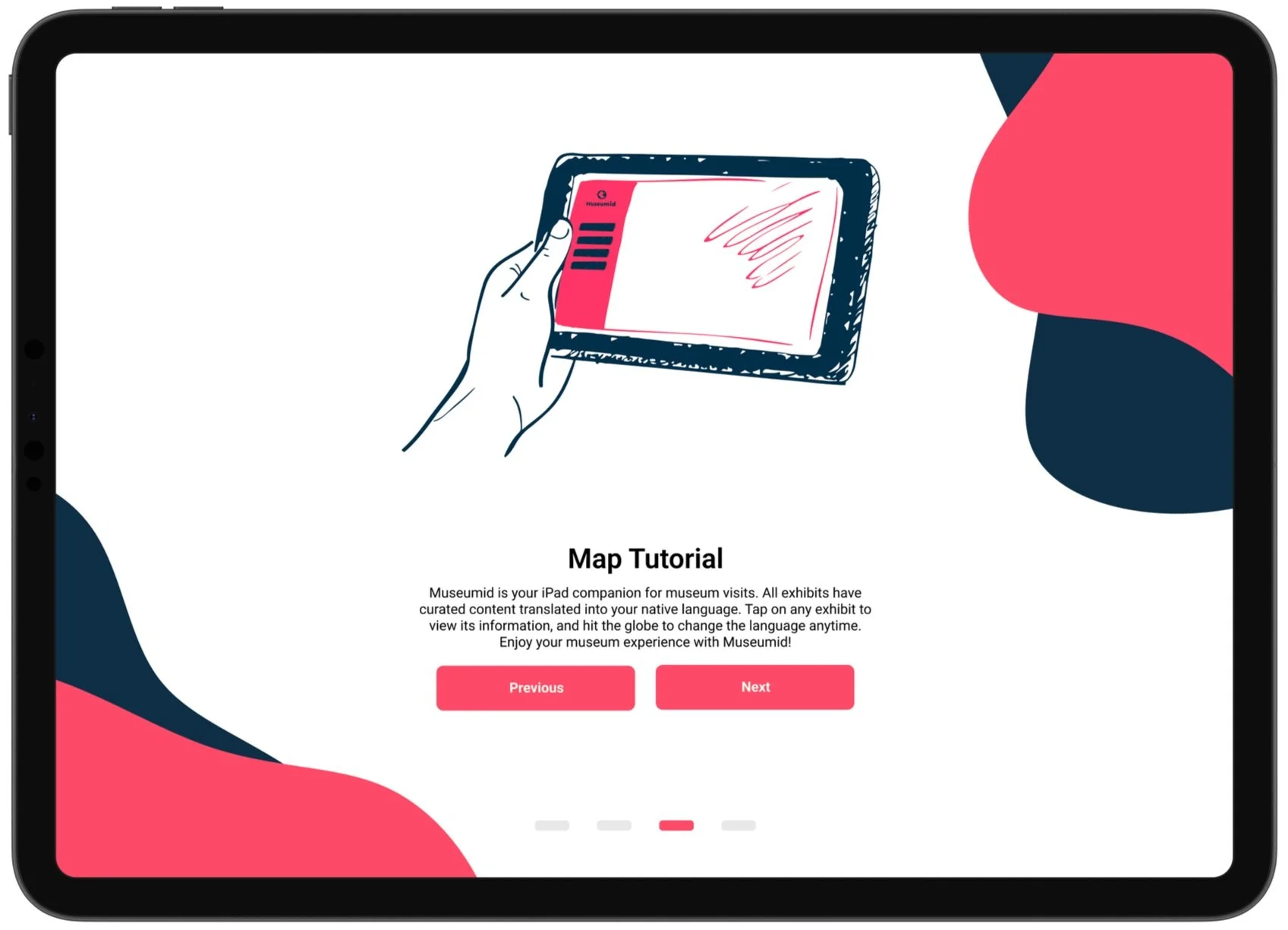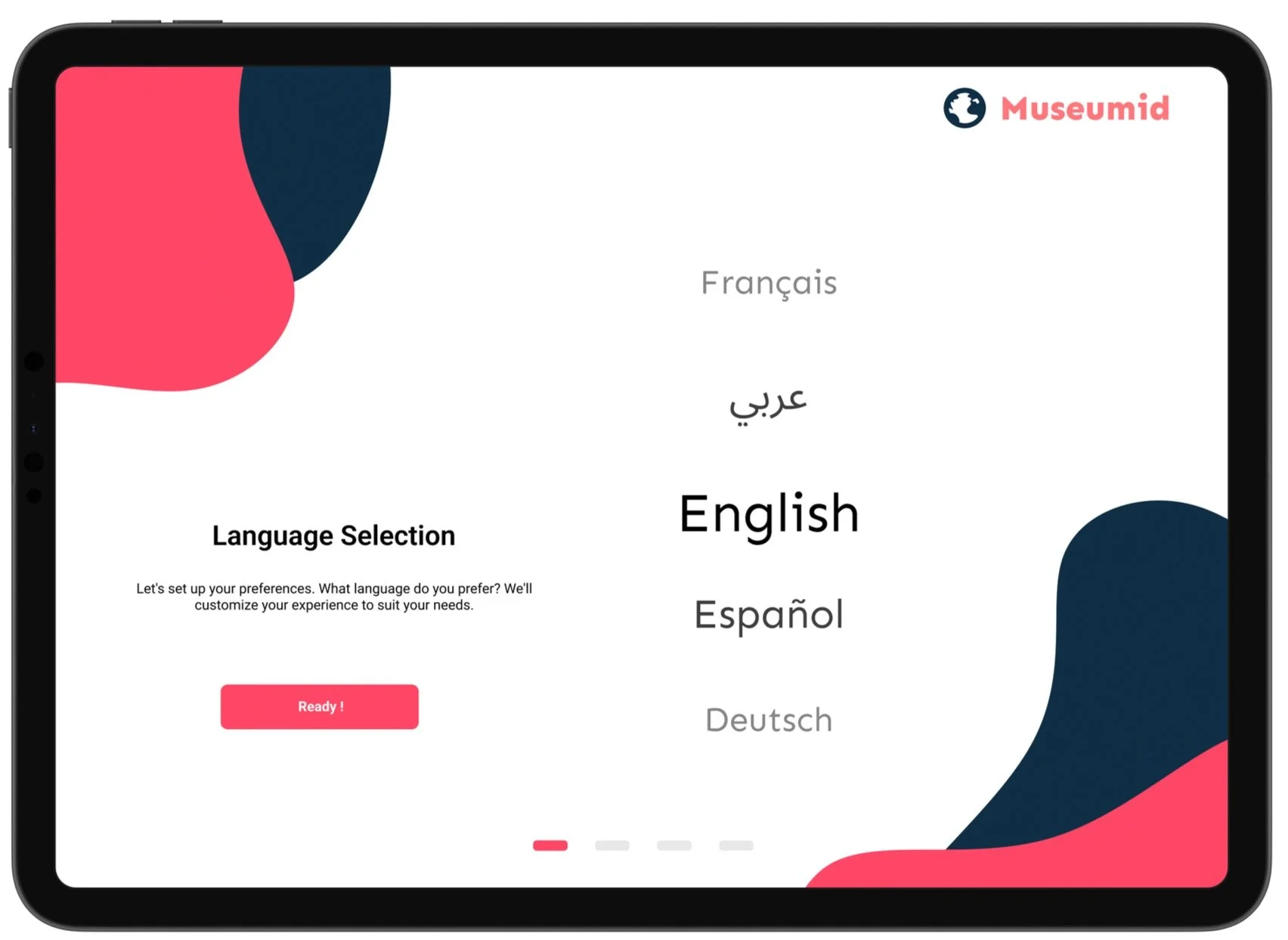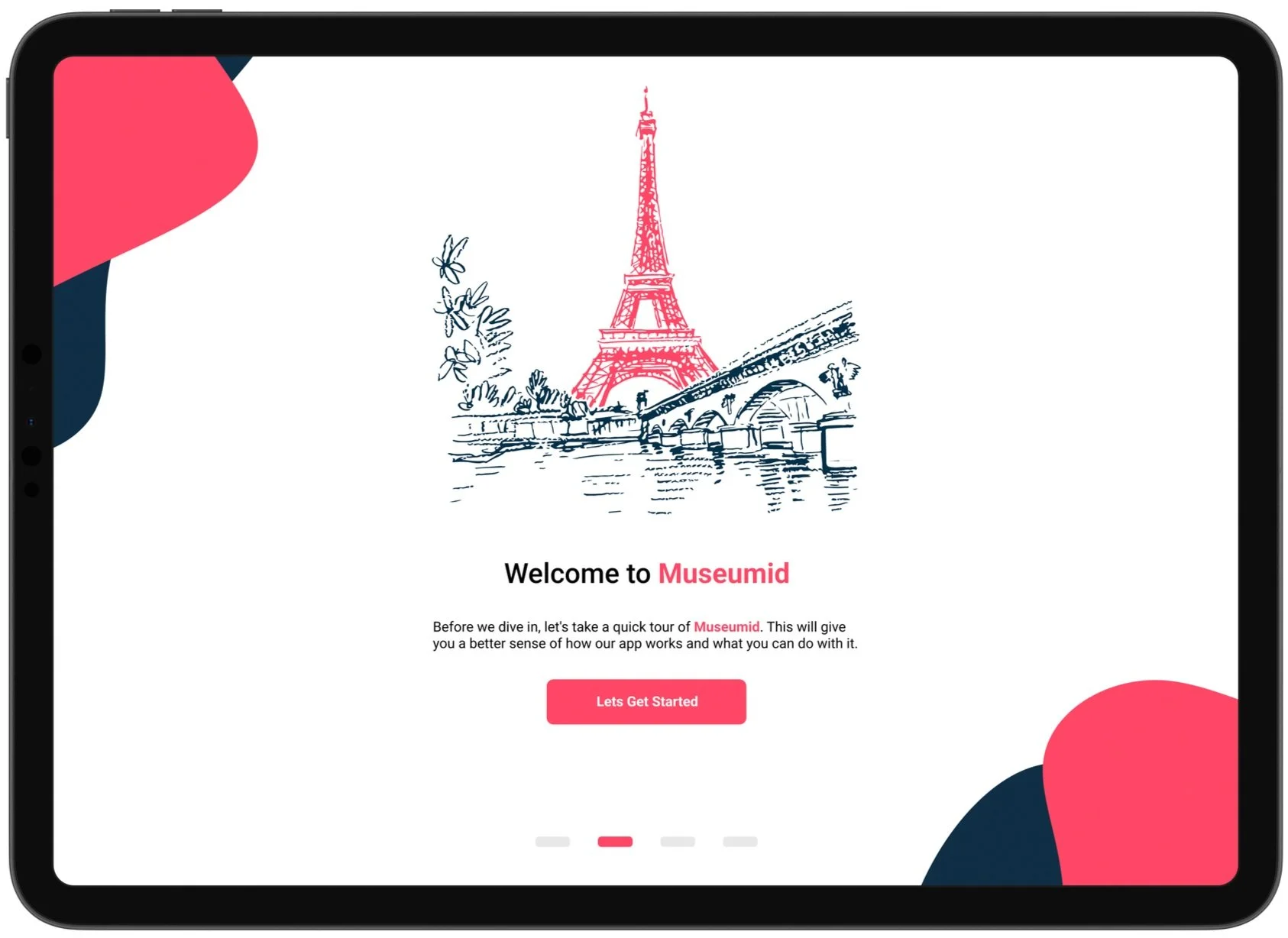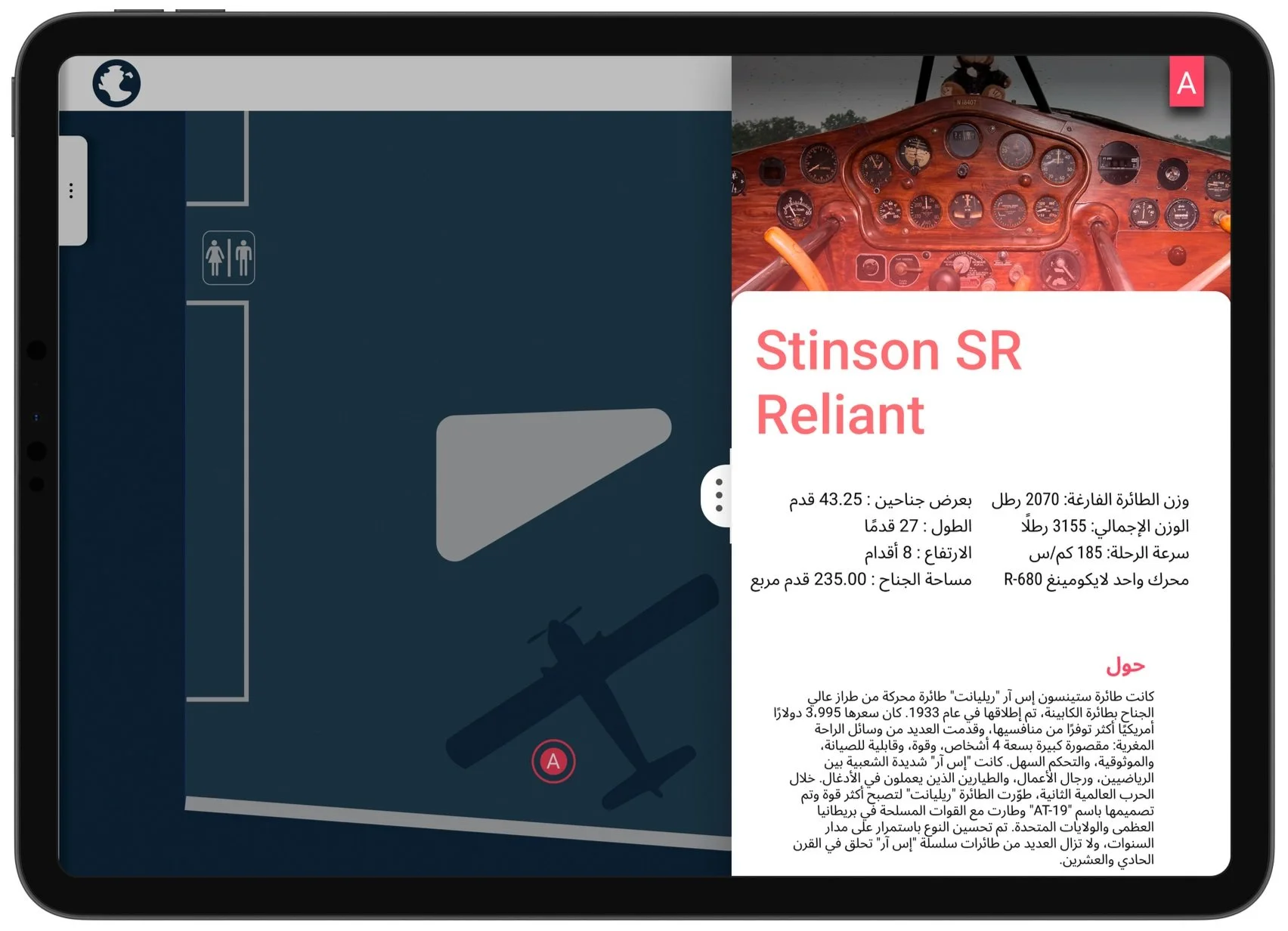Museumid
Tablet prototype designed to assist multilingual museum visitors.
Executive Summary
Museumid is an innovative iOS tablet prototype specifically designed to enable non-native English speakers to fully appreciate and engage with the information presented in museums. This was done using the Goal-Directed Design process and took place as part of Kennesaw State’s 2023 Senior Capstone course.
Approach
Goal-Directed Design (GDD)
Role
Interaction designer, user research, content design
Tools
Figma, Figjam, Illustrator, Discord
Duration
January 2023 - April 2023
Team Size
Five
Prototype (links to Museumid’s Figma files)
Figjam Workspace (link to Museumid-related research process)
Links
Meet the Team
-
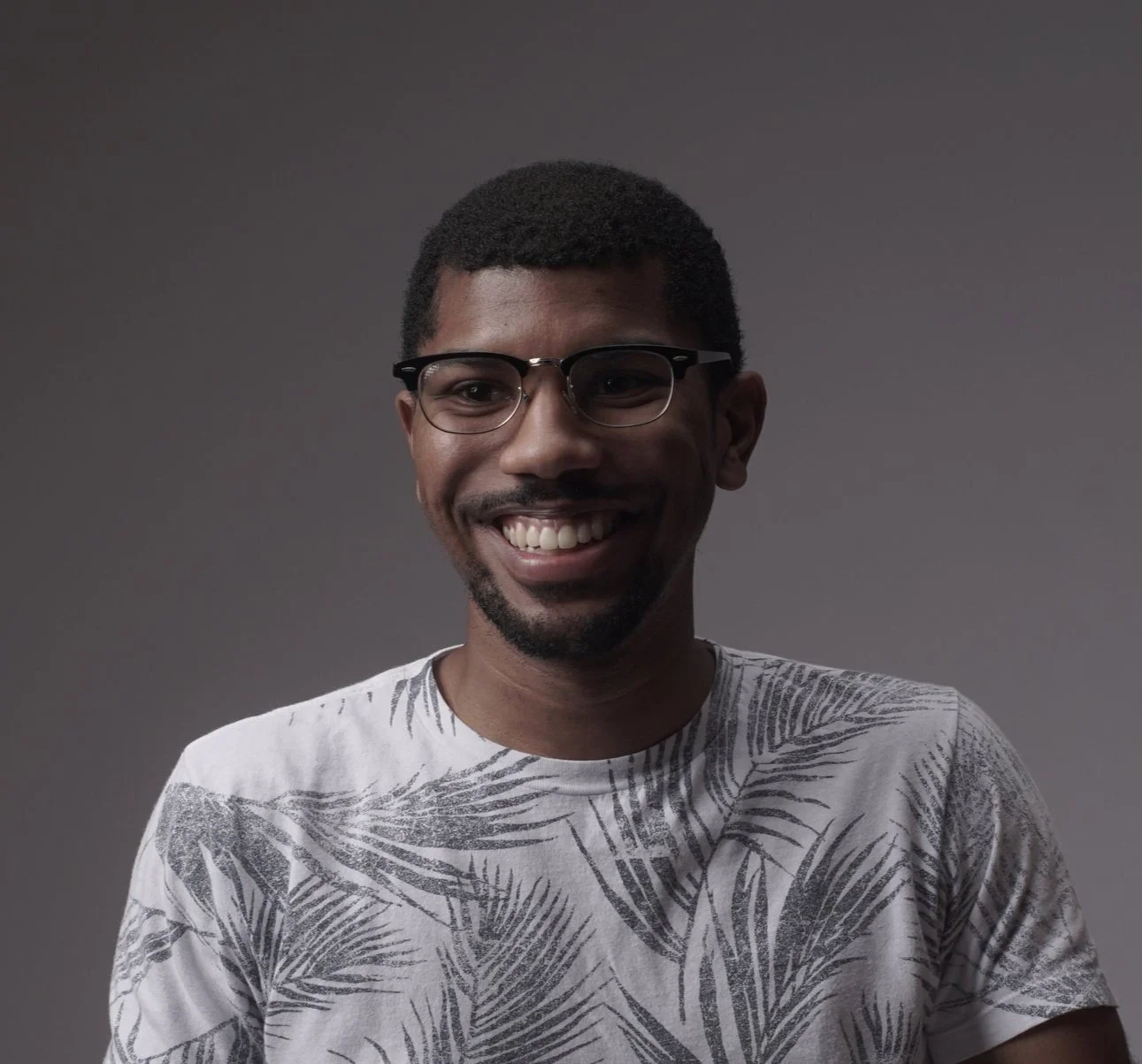
Matthieu Daley
TEAM LEADER
-

Lauren Johnson
UX DESIGNER
-
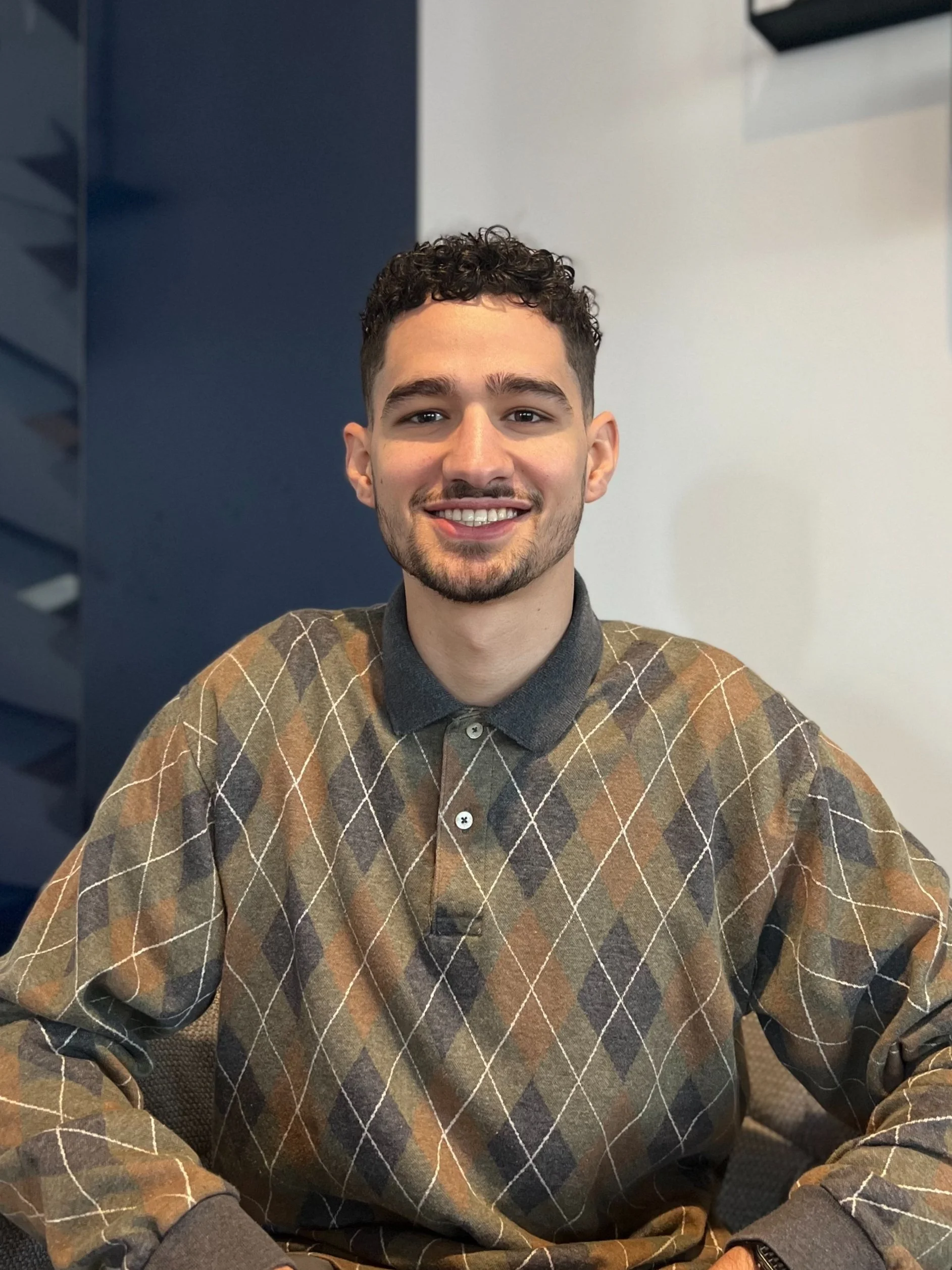
Mateo Perez
UX DESIGNER
-
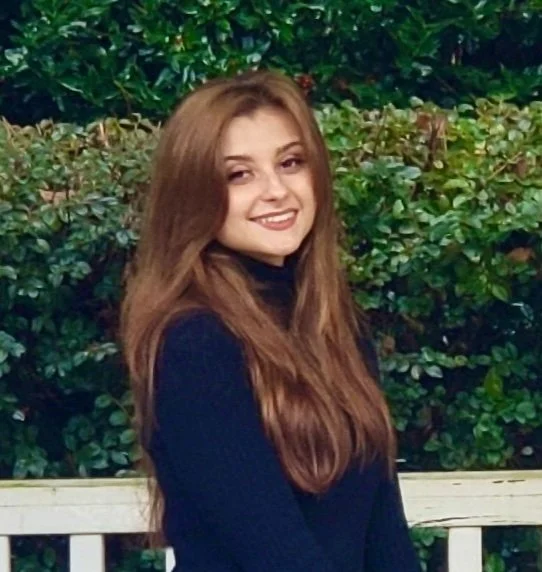
Natalia Navaroli
UX DESIGNER
-
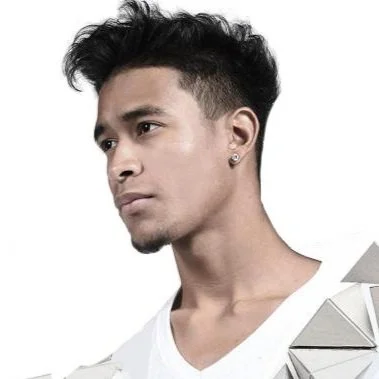
Juan Kinshasa
UX DESIGNER
Introduction
The advancement of technology has revolutionized various aspects of our lives, including the way we experience museums and exhibits. For people visiting a museum in a foreign country where they don't speak the language, it can be frustrating to miss out on valuable information about the exhibits. To address this issue, my team and I designed a prototype of an iPad application named Museumid, which will enable visitors to read all the exhibit information in their native language. This innovative tool could significantly improve the museum-going experience for people from diverse backgrounds, making it more accessible and enjoyable.
Once we had this idea, we began using the Goal-Directed Design process in order to tailor our prototype to users' goals.
Goal-directed design is a design approach that focuses on achieving specific user goals and needs. It involves identifying user goals and behaviors, designing user experiences that support those goals, and testing and refining those designs through user feedback. The goal of goal-directed design is to create user-centered products that are effective, efficient, and satisfying for the user.
Below I have set up and described our journey in detail, following the GDD model pictured here.
Research Phase
In the research phase, a kickoff meeting is held, literature reviews and competitive audits are conducted, stakeholders are interviewed, and user observations are made to identify the users' goals and needs for the product. This information is crucial for designers to create a user-centered product that will be successful in the market.
Kickoff Meeting. Since this prototype was created for our senior capstone class, there were no real stakeholders to interview and hold a kickoff meeting with. In order for us to still follow with GDD, however, my team and I held a hypothetical kickoff meeting in which we created a problem statement and assumption statements.
Literature Review. GDD developers rely on Literature Reviews to gain insight into the existing market and understand how users perceive and respond to existing products within the market. This information is crucial in developing a product that meets users' needs and preferences, and ultimately ensures success in the market. We performed a small literature review, and this helped the team understand that there was a common theme of needing multilingual options in places such as museums, but the current ideas on the market aren’t executed very well. We also saw that because museums are incredibly beneficial for the population in general, it makes sense to have the information be as accessible as possible.
Competitive Audit. Conducting a competitive audit was a crucial step in our design process because it provided us with valuable insights into the strengths and weaknesses of competing apps in the market. This information enabled us to identify opportunities to differentiate our app and create a unique value proposition that meets users' needs more effectively. By analyzing our competitors' offerings, we were able to gain a better understanding of what our target audience wants and how we can deliver it to them in the best possible way. We researched 6 competitors - our findings are pictured below.
Stakeholder Interviews. Again, since we could not have real interviews with stakeholders, our team had to omit this portion of the GDD process, instead using Discord to discuss ideas that might come up in a Stakeholder interview, such as what platform should this prototype be designed for? What content do we use? Who are we designing for?
User Observation/Interviews. Our team conducted four user interviews to gain more insight into how our product should be designed and what are our user’s motivations for using the product. Here are our main findings:
People come to museums for more educational purposes than entertainment.
Most if not all plaques observed in museums were in English, and majority were non-digital.
If offered, many users would select their native language within a museum.
Some users have used Google Translate when navigating museums in a foreign country.
Most people do not like crowds and scan the information on plaques.
From these findings, we were able to start with the modeling phase of the GDD process.
Modeling Phase
During the modeling phase, designers create personas that are modeled from research findings. Personas are representations of user archetypes, which help designers to build products tailored to the specific needs and characteristics of each archetype. Developing these personas is critical for designers to effectively identify and understand the needs of their target users, and my team developed two primary personas to execute this process.
Meet Antonio and Katalina
Antonio Rizzuto and Katalina Williams are our personas based off of all of our research from earlier. They helped us develop the most efficient user-centered app we could throughout this process; their personal details are found below.
Requirements Phase
In this phase, my team and I generated a list of app requirements based on prior research and persona development. This process began with the creation of a context scenario that was fashioned to simulate the daily routine of our primary personas. Such an undertaking offers the ability to explore how the user will integrate the app into their life and inform design decisions accordingly. A sample of each context scenario developed by the team is as follows, featuring both Antonio and Katalina.
Antonio
Antonio was on a walk one day with his dog and 3 year old son when he received a call from his Dominican mother. She was in town to visit for the week, and would not stop raving about wanting to go to one of the many Museums that Chicago has to offer. Antonio finishes his walk, and makes a plan for them to visit the Art Institute of Chicago.
A day later, they are on the way to the museum, and along the way Antonio is having to explain and translate a lot of things for his Spanish speaking mother. He begins to worry about how accessible the exhibits they are going to see will be for her. He knows his mom really likes to learn, and is afraid that she may not get to know what she is looking at half of the time. Not to mention, Spanish is his 3 year old son’s native language, too.
He starts to look into details about the Art Institute, and if they offer multilingual experiences for non-English speaking guest. He learns that, upon arrival at the Art Institute, you may ask an attendant for access to a program that allows you to carry a tablet that functions on an app called Museumid. The app allows for you to move around the museum and find translated text from exhibits you find interesting.
The family arrives, finds their tablets to access Museumid, and selects their language. They spend time walking around the Art Institute taking pictures. As they approach an exhibit they’re shown a pop-up map that allows them to see where they are at, and click the desired exhibit to learn more about it in their own language.
Antonio spends 3 hours at the museum, and his mother leaves extremely satisfied with her experience.
Katalina
Katalina has been studying abroad in France for over 2 months now. Her studies, culinary arts, takes up a lot of her time, so she hasn’t yet got the chance to explore France for some of its most notorious places. One of them, The Louvre Museum, is walking distance away from the place she is staying, and she is determined to go by days end tomorrow.
Throughout her short time in France thus far, Katalina has experienced struggles with the language barrier between herself, an English speaker, and the rest of the locals. She’s excited to go the Louvre Museum, but is a bit intimidated by the language barriers and struggles she knows she will face throughout her experience. She has an act for learning, and can be intrigued by almost anything, but she wonders how much of the content will be accessible to her.
The next day, she crosses her fingers, buys a ticket, and heads to The Louvre Museum. Upon arrival, she finds an english speaking tenant and gets checked in. She tells him the worries she has about the language barrier, and he excitingly tells her about a new program the museum offers for non-native speakers that allows them to carry around a tablet using Museumid to function as a translating device.
She is relieved to hear of this program! She opens the application, selects her language, and makes her way through the museum. While doing so, she is tracked on Museumid to show her current location around the museum, and it even offers content related to the exhibits she’s closest to in her desired language.
At the end of her experience, she is more than thrilled with the content she was able to soak in. She makes her way home to tell some of her other study abroad classmates about her experience using Museumid.
Once this was completed, we moved onto the frameworks phase.
Frameworks Phase
During the frameworks phase, designers create a visual representation of the app's interface called a wireframe. Wireframes are simplified designs that focus on the layout and functionality of the app, without incorporating color, graphics, or detailed text. They allow designers to test and refine their design ideas before moving on to more detailed and time-consuming stages of the design process. The wireframe also helps stakeholders understand how the app will work, and can be used to get early feedback from users to refine the design. Therefore, this phase is crucial in creating a successful and user-friendly app.
We began this process by mapping out on a whiteboard what approach we wanted to take regarding the platform of the application. We weighed the pros and cons of each one, and then took to creating both digital and traditional sketches of our screens.
Once this was finished, we moved onto actual prototyping.
Refinement Phase
After building our prototype, we then moved onto refinements. Each of us went over the prototype in depth to ensure that all details and interactions worked properly; Once we felt that the prototype was ready, we conducted user testings on it to see what our users liked, disliked, how they interacted with it, and what could be improved.
We were able to have a few participants explore our app fully and give us their critique, and from that we concluded the following:
The arrows originally included could cause confusion; suggestion to change the color or remove.
There is no way to change language while already going through exhibit.
Users would like to be able to scroll on the map.
Users would like to see where bathroom is located on map.
The app has a great colorful design and is aesthetically pleasing.
Set-up is easy to understand.
Aircrafts are shown clearly and have great contrast.
Conducting tests was crucial as it facilitated us in identifying certain issues which, if resolved, would enhance the user experience of the application. Once the errors were brought to our attention, our team worked collaboratively to address and rectify them, resulting in the finalization of our prototype.
Conclusion
Following weeks of dedicated work, my team and I completed the final prototype, and each phase of the Goal-Directed Design process was meticulously executed. The research phase was thorough, enabling us to identify user goals and requirements through a combination of literature reviews, interviews, and user observations. We then created a persona and established a list of requirements for our product based on the persona's characteristics. In the frameworks phase, we created wireframes and then refined them to ensure the final prototype was visually appealing, intuitive, and easy to use.
Through this process, I gained a valuable lesson in justifying design decisions and articulating them to the team members effectively. I recognize the need to devote more time to the prototyping phase, to refine my Figma skills further. Despite this, the entire process was a valuable learning experience, and I am thankful for my team and the opportunity to learn from this project. The final prototype reflects our team's dedication and effort, and I am really happy with the outcome.


